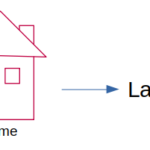8 tips for even deeper water savings
Each week the news has ore dreadful updates on aridification (euphemistically called “the drought”). Yet maybe you’re one of the people who’ve been pretty good at water-consciousness for years. What is your role now, what can you do?
Here are a few tips to deepen your Practice, which you aren’t likely to find on typical how-to lists. Tips #1, #5, #6, #7, and all the habit shifts, apply no matter whether you live in a house, rental, condo, or apartment.
(1) Examine your water bill
My water bill (LADWP), includes a section “Water Charges.” It tells me that our household average is 54-60 average daily gallons, well below the 80 gallon target circulated by policymakers.
The bill also offers a “Usage History” that goes back nearly two years. It gives me a little bar chart showing my Tier 1,2,3,4 water use. In a text portion of the bill, it tells me my Average daily gallons for last year, and the current year.
Are you within your Tier 1? If so, GOLD STARS for you! In the months shown on your bill, did you evver spike into Tier 2, Tier 3? If so, think back to what was different at that time.
My bills tell me that for 2 months in summer 2020 I dipped into Tier 2. I know that at that point I was depressed about the pandemic, so was visiting — and watering — my vegetable garden daily. Lesson learned: I won’t be doing that again.
Within your Tier 1, how can you do even better? Most of the year my household has used around 30% of our Tier 1 allocation. So the challenge becomes: Can I keep it there?
(2) Think long-term
Aridification means this area is becoming more arid. This so-called “drought” is NOT a temporary thing. This is the new pattern for normal. Think in terms of habit shift. Think in terms of installation of water-saving devices, ripping out your lawn, adding drip-irrigation, to help you stay on track for years to come.
Nest time you have to replace a dishwasher or clothes washer, choose the ultra-low water model. You’ve probably already changed your toilets, showerheads and faucet aerators to low-flow versions (but if not, now is the time!)
(3) Go Grey.
If you already have greywater hookups installed on your property, GOLD STARS to you! These might include a laundry-to-landscape system, or a shower-to-landscape hookup. In our house, we have both of these, plus in the main bathroom the sinks also drain to our trees.
If you don’t have greywater, THIS is your summer. Learn about greywater, decide what type of system might fit for you. Skill-up and learn how to install it!
Focus on habit shift: use that greywater sink rather than the sink which drains to the sewer.
(4) Get a garden sink
An outdoor sink, right in your backyard, is a cool solution if your plumbing won’t work for greywater hookups.
(5) Volume control
Say you need to rinse a dish or wash your hands. Remember the faucet has more than just “full blast” — it has variable control. Sometimes we forget that we can turn it on just a little to accomplish the same task. Sometimes we overlook the fact that the proper tool for plate scraping is a utensil, rather than blasting it with water. Over days-weeks-months, this habit change adds up to a lot of water saved.
(6) Let it mellow
If it’s brown, flush it down, if it’s yellow be mellow. My grey hairs are showing if I admit that we learned this little jingle in the drought of the 1970s!
American society has yet to come around to a more sustainable approach to pee and poop than plopping it into fresh potable water and flushing it into the sewer. (post to come about that paradigm shift) Until society makes that shift, make the habit change: apply the wisdom in the jingle.
If you’re male, remember that compost piles need to be watered and, unless you’re ill, urine won’t convey pathogens. See Liquid Gold by Carol Steinfeld.
(7) Bucketting
Another habit shift. No matter if you’re in a house, condo, rental, or apartment, this is the new practice.
(8) Slash emissions
Do all you can to eliminate single-use items, reduce transportation and travel, boycott fast-fashion, and reduce how much “stuff” you consume. Reducing consumption reduces global warming which reduces how bad this aridification gets.

